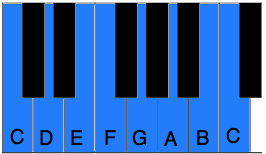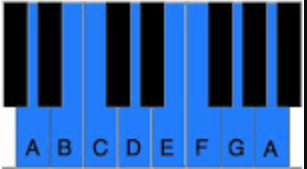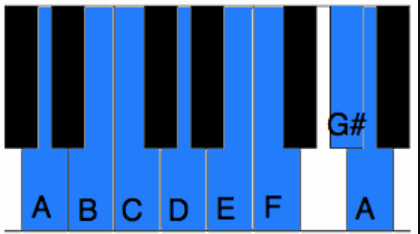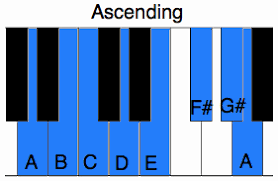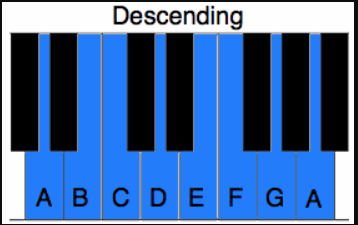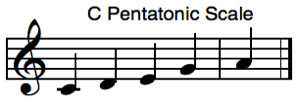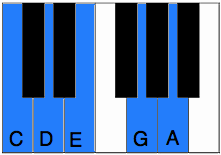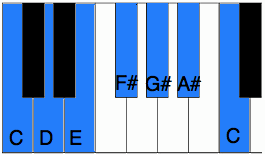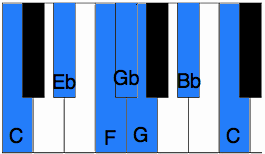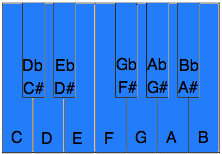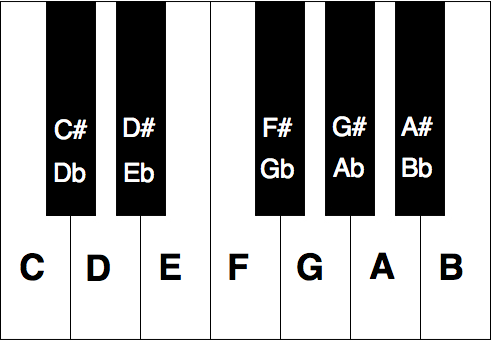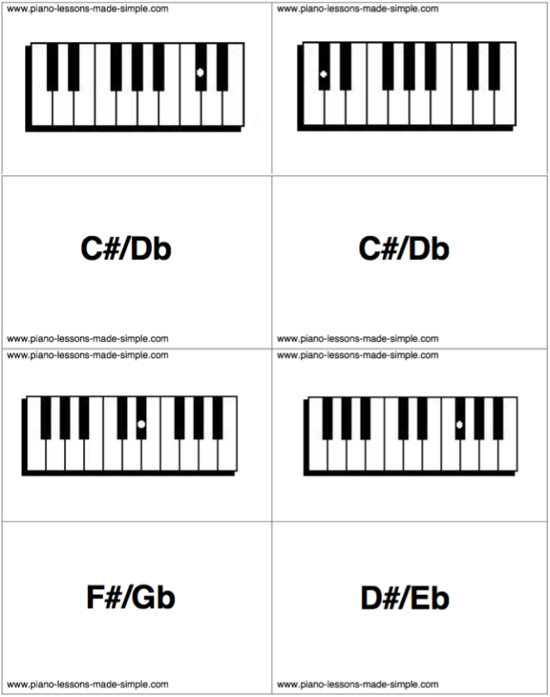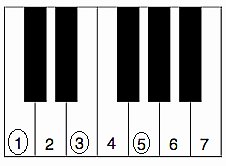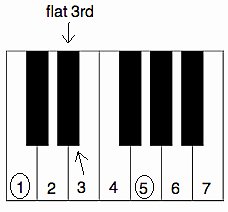Piano chord diagrams can be represented in many different ways. But, the main concept stays the same. They are used to show what notes go along with a certain chord and sometimes have a picture and the fingering.
Piano Chord Diagrams – Pictures
Probably the easiest type of chord diagram to use would be an image. These diagrams show an actual picture of the keyboard and have a some way of representing which notes go along with that chord.
These are helpful because they show the actual image of the piano and gives and easy to read way to find the notes.
Here is a list of the piano chord diagrams for all the notes and keys for most chords
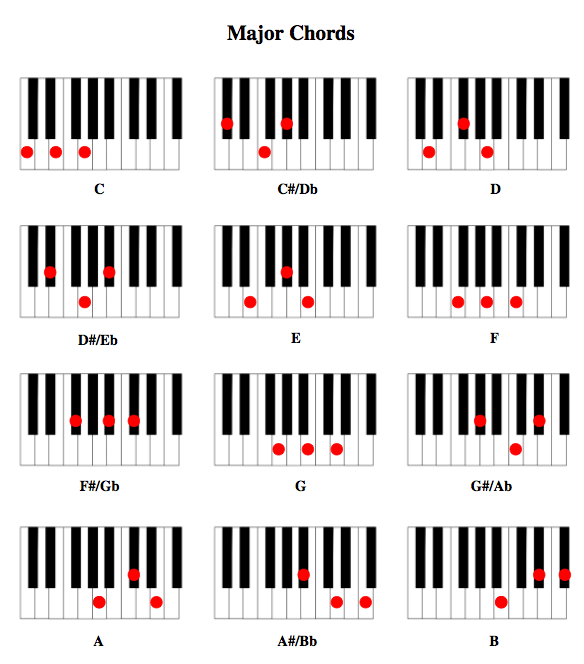
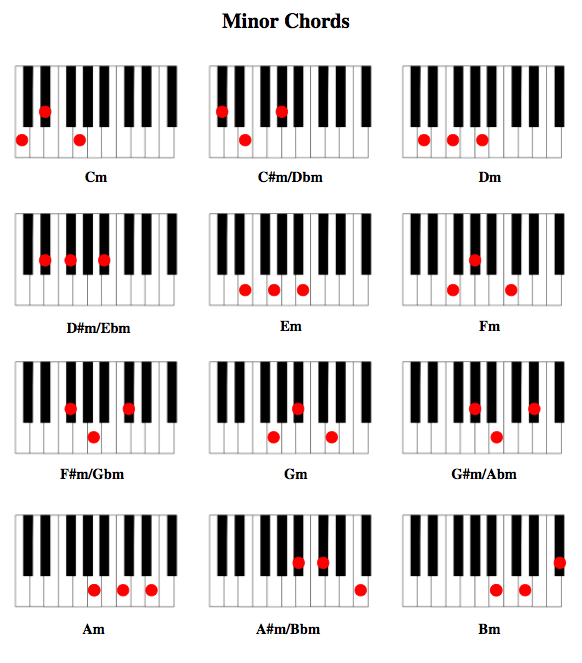
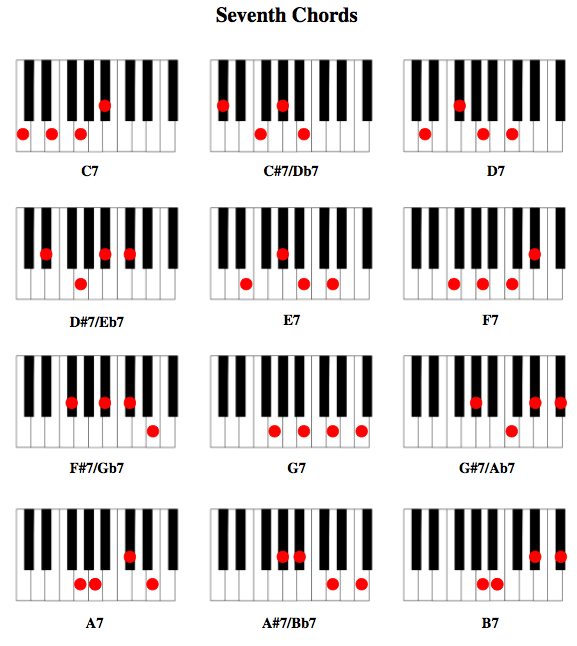
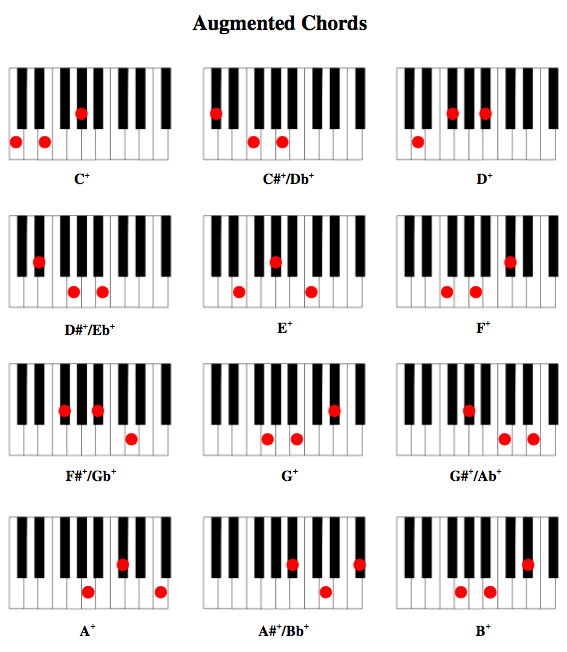
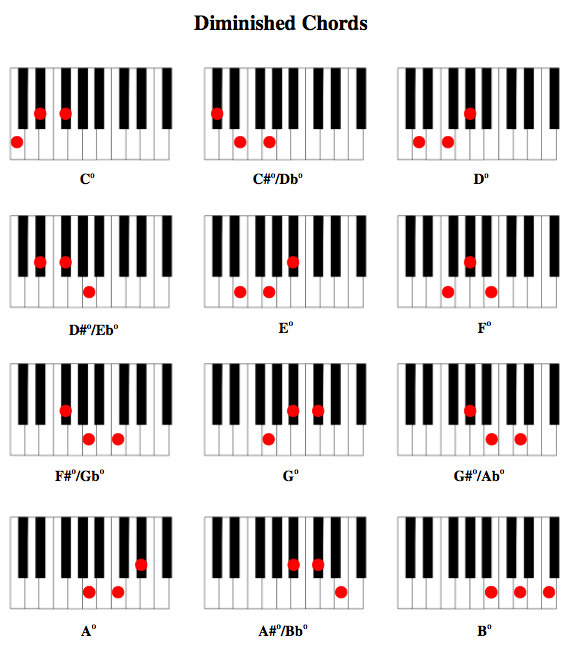
Number System
Another way of displaying chords is through the number system. This can be helpful for the more advanced piano player who already knows piano scales.
To use this method you need to know the key signature of the chord you are finding. For example lets use the key of C. C Major is made up of the notes C, D, E, F, G, A, B. Now that we have the notes of the scale we need to give each note in the scale a number.
We would say that C is 1, D would be 2, and E is 3. You would go up the scale giving each note name a letter.
Here is the numbering for the key of C.

Now that each note has a letter we can go ahead and look at the diagram.
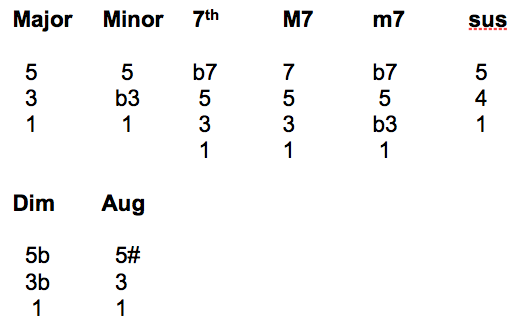
These diagrams are made up of numbers that correlate with the note in that key and the note that is played in that chord.
The b in the diagram represents a flat note or a lowered half step. A # represents a sharp, or a raised half step.
For example, in a major chord in the key of C you would play the 5th, 3rd, and 1st note in the scale. In the key of C that would be G, E, and C.
This simple diagram is an easy way to find any chord in any key on the piano as long as you know the scale.
Let’s do one more example!
Let’s use the key of G. The notes in the key of G are G, A, B, C, D, E, F#. Give each note name a number and it will look like this.

If we wanted to find the notes in a minor chord for this key you have to find the 1st note, b flat 3rd, and 5th.
This tells us that the notes for a G minor chord would be G, Bb, and D.
Use these piano chord diagrams to find the notes for any key on the piano. You can print these off for reference until they become second nature. It will take time but the longer you use these the quicker you will be able to quickly remember the notes of any chord on the piano.
Need more help learning chords? Learn almost every chord you’ll ever need with our Piano Chord Encyclopedia.


